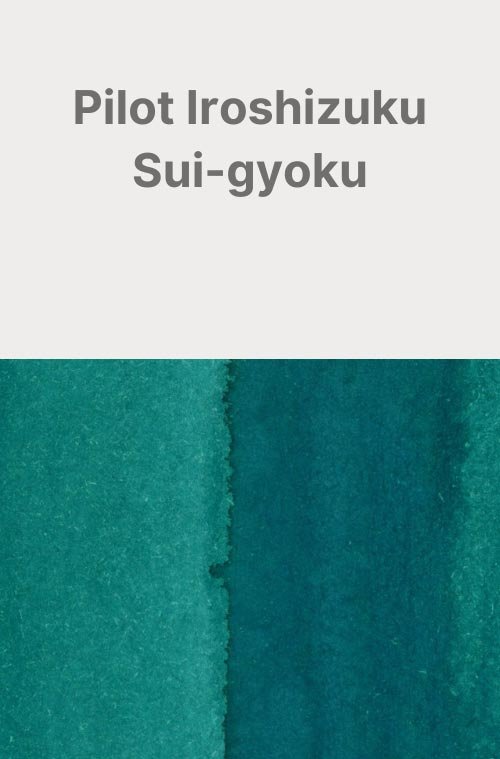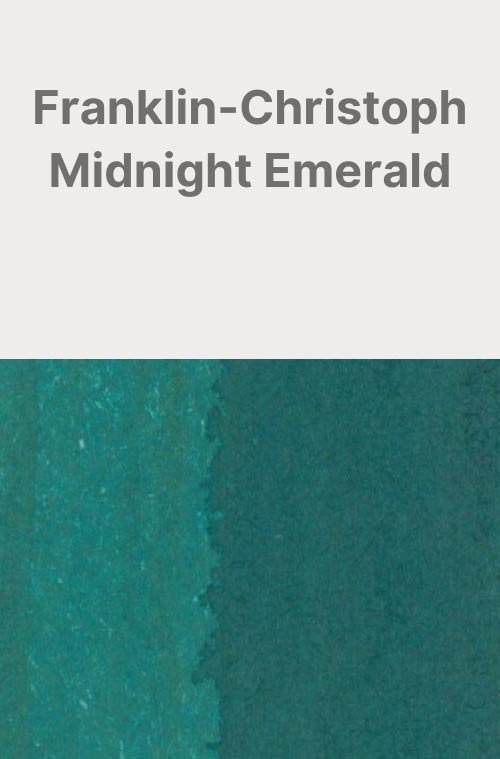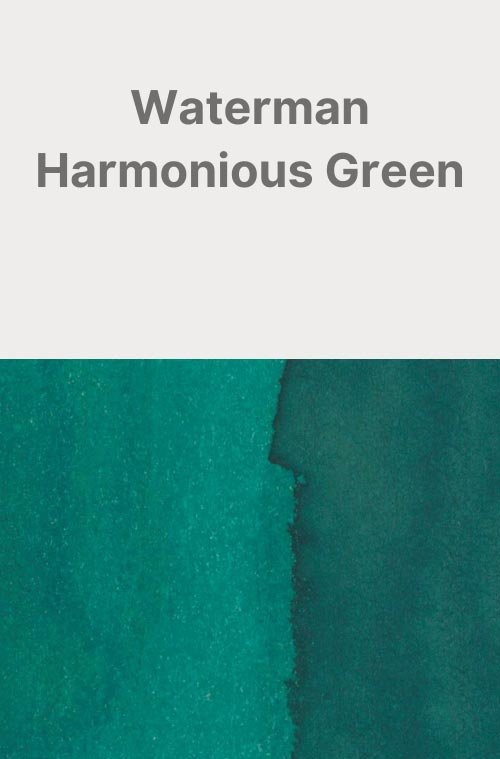Pilot Iroshizuku Sui-gyoku
Ink Review #42
*Please note that the scan is the accurate representation of this color.
Disclosure: This post contains affiliate links. If you click and make a purchase, I may earn a small commission.
Overview
The color/properties:
Sui-gyoku is a deep aqua green that shades with a soft cut between its varying tones in both cursive and print. There’s not a lot of contrast between the areas where the ink pools, and with finer nibs, this ink may appear as a more solid color on paper. Wider nibs go a long way to bring out more of the shading that gives this ink a particularly lush texture. The color of the paper used will also greatly affect the color — white paper will bring out the ink’s bluer tones, while cream will bring the green tones forward.
When doing the droplets, Sui-gyoku exhibited a slight red sheen, and on certain papers (Midori MD or Tomoe River, for example) you may notice a hint of sheening in normal writing around the edges of where the ink pools. A wetter pen would make that more substantial, but this isn’t a sheening ink, and it’s not something to expect from it in most circumstances.
Ink splat
Ink droplets
Rhodia
Leuchtturm1917
Performance on paper:
Sui-gyoku mostly performed well. I experienced some bleed-through and minor feathering in the Kokuyo notebook with most of the nib sizes. Despite that, this ink was well-behaved on each of the other test papers. The dry times were just below average. They were notably better on the Kokuyo paper, but that was also where the ink performed the worst. On the other papers, the finer nib sizes had slightly longer dry times than average, but typically, the larger nibs still maintained dry times within 20 seconds. There was some water resistance, but the ink creates a cloudy haze when exposed to water and the readability may vary.
Midori MD
Maruman
Tomoe River
Kokuyo
Water resistance
Chromatography
Performance in the pen:
Sui-gyoku had a wet flow that was consistent across each of my test nibs. I didn’t encounter any hard starts, skips, or stops during my tests, and the ink felt sufficiently lubricated to provide a comfortable writing experience.
Cleaning was easy, and the ink washed out with a basic flush and soak, without leaving behind any traces of color or residue inside the pen.
Written on 52 gsm Tomoe River paper (white) with a medium nib
Written on Midori MD paper (cream) with a medium nib
Performance in a pen: 10/10
Performance on paper: 9/10
Color saturation: 7/10
Sheening: 3/10
Shading: 4/10
Dry time: 7/10
Water resistance: 4/10
Ease of cleaning: 8.5/10
Shimmer: None
My personal thoughts…
I did some research into the meaning of “sui-gyoku” and fell down a rabbit hole. I’m no language expert, and some of the explanations and definitions I found seemed rather complex, but the simplest answer seems to be “Emerald.” Fair enough – that makes sense. I see where it’s coming from. The product listings didn’t lie to me after all! Name aside though, I love the color, especially on white paper where it loses a great deal of its darker green tones and those lighter, more brilliant blue tones come forward — dare I say, like an emerald! When you see it in good lighting, it’s just beautiful, and it gives Sui-gyoku a sense of thought and care behind it that ultimately adds to an overall feeling of quality. It’s a welcome diversion from the standard dark blue-green-with-red-sheen that I’ve seen done time and again, and a very welcome addition to my collection.
Written in a 52 gsm Tomoe River and Midori MD notebooks with a Taccia Spectrum (medium nib)
More images/info:
Featured in the photography and writing samples:
Pilot Iroshizuku Sui-gyoku (Amazon)
Taccia Spectrum Forest Green, medium nib
Good Inkpressions 52 gsm A5 Tomoe River notebook
Midori B6 Slim lined notebook (Amazon)
Chic Sparrow Outlander A6 leather notebook cover
Galen Leather A6 undyed leather notebook cover
Traveler’s Company brass clip (Amazon)
Franklin-Christoph Black Nappa Leather pen roll
Galen Leather pen sleeve
Lego 10329 Tiny Plants (Amazon)
Comparisons:
Tools and materials used in the writing samples:
A TWSBI Diamond 580 AL with 7 nib units including a Needlepoint grind, EF, F, M, B, 1.1mm stub, and an Architect grind. All nibs tuned to perform at the same medium wetness.
A Rhodia No16 A5 DotPad
A Leuchtturm1917 A5 Notebook
A Midori MD A5 Notebook
A 68gsm A5 Tomoe River Notebook
A Maruman Mnemosyne A5 Spiral Notebook
A Kokuyo Campus A5 Notebook




















